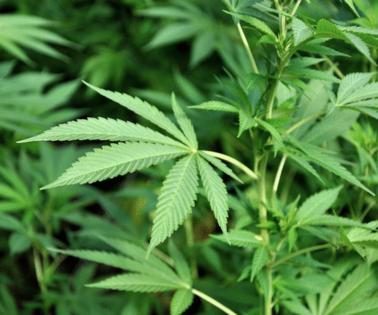Cannabis-related emergency department visits up this year as Maryland begins tracking data
Published in Health & Fitness
BALTIMORE — Maryland has experienced a “significant increase” in cannabis-related emergency department visits, according to the Maryland Department of Health.
The health department launched a data dashboard last week to track public health impacts of cannabis and visualize trends pre- and post-marijuana legalization in the state.
The state saw an average of 816.9 emergency department visits related to cannabis per month so far this year, up from 779.7 per month in 2023, according to data from the health department.
Recreational marijuana use for adults became legal in the state on July 1, 2023. That month saw the highest number of cannabis-related ER visits in Maryland since 2019, with 928 visits. Emergency department visits had been rising sharply in the months leading up to legalization, with May 2023 — just two months before the law changed — recording the second-highest total at 914 visits.
A year after legalization, July 2024 saw 837 cannabis-related ER visits, according to state data, with the number dropping to 813 visits last month.
The dashboard includes data on emergency department visits, youth and adult use, substance use services and calls to D.C. and Maryland poison centers from 2019 through the current full month. Each portion of data can also be broken down by age group, race, sex and geographic location.
“The new Cannabis Public Health Data Dashboard centralizes the latest data on cannabis use, health outcomes, and trends within the community, allowing for informed decision-making and discussion,” the Department of Health said in an email. “More timely and granular data will give organizations a better understanding of the populations they serve, bolstering our collective ability to target resources and programs and connect people to care.”
Patients whose primary self-reported reason for visiting the emergency department included cannabis, or cannabis use was marked in their discharge diagnosis, are counted in the data regarding emergency visits. The most noteworthy jump in emergency department visits occurred between 2022 and 2023, the department said, when visits from those aged 20-29 increased by about 44%.
The increase in visits could be linked to an increase in cannabis usage, but it could also be due to a decreased stigma, making people more likely to share information about their use with a healthcare provider, the health department said in an email. Providers might ask patients more frequently about cannabis use post-legalization.
Poison control calls have climbed too, the release said, with calls doubling for those aged 9 and under and tripling for 10 to 14-year-olds between 2021 and 2023. However, the number of calls to the Maryland Poison Center was low during July 2023, with 28 calls compared to other months which saw around 40 to 50 calls.
The Poison Center has been receiving a higher percentage of calls regarding unregulated cannabis products that aren’t purchased at a dispensary, said Emily Paterson, public education and communications manager for the Maryland Poison Center.
Because some insurance doesn’t cover the use of a cannabis dispensary, some still resort to obtaining it through illicit means, said Christopher Welsh, associate professor with the University of Maryland School of Medicine. With reports of other drugs sometimes being in unregulated marijuana, Welsh said there are programs in Maryland where individuals can have their supply tested.
While Welsh doesn’t work in the emergency department and only sees patients once they’re admitted, he said he’s seen some increase in people hospitalized related to marijuana. But with more people using marijuana, there are also more experiencing issues with withdrawal when hospitalized for a different health concern, he said.
Though people often think of marijuana as being “a safe thing,” Welsh said, they need to understand how harmful the substance can be for small children and the effects cannabis has on developing brains. It is important to keep cannabis products locked away, especially edible items that aren’t individually wrapped.
“Cannabis itself is very, very difficult to kill people, but if it does, it’s usually going to be a small child,” Welsh said.
Paterson said the “golden rule” is to keep cannabis items “up, away and out of sight, preferably in a locked box, a locked cabinet, some sort of locked mechanism.”
Children experience different symptoms from cannabis exposure that can be unpredictable, Paterson said, and they are being referred to healthcare facilities at a higher rate. When exposed, children often get fatigued, have trouble walking, sitting up or breathing, and can even experience changes in heart rate or blood pressure.
For adults, Paterson said the center often hears either errors in dosing or interactions with other medications. It is important to read packaging labels and note that the numbers displayed for the milligram per piece and the total amount of THC in the product are different, Paterson said. Individuals should also be mindful of the difference in the amount of time it takes to feel the effects from an edible product compared to smoking marijuana to avoid consuming too much.
The Maryland Cannabis Administration and the Department of Health created a public education campaign called “BeCannabisSmart” to share information on topics such as drugged driving, preventing accidental exposure to pets and children, and encouraging smoke-free public space compliance.
“These are all important topics as we approach the holiday season and many Marylanders attend festive celebrations and visit family and friends who may have children and pets in the home,” the administration said.
--------
©2024 The Baltimore Sun. Visit at baltimoresun.com. Distributed by Tribune Content Agency, LLC.










Comments